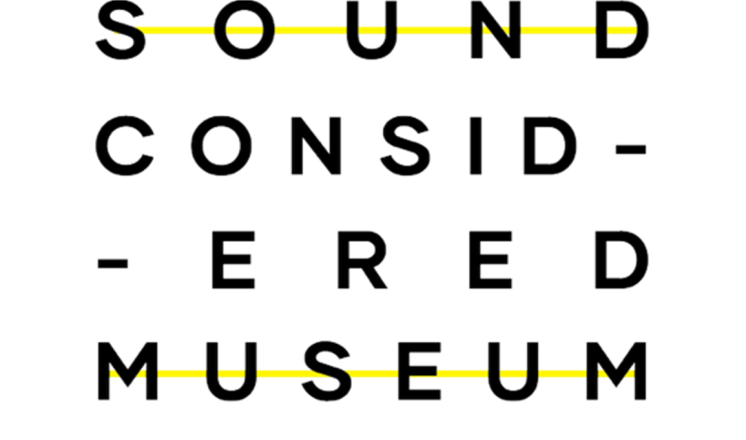The Sound Considered Museum
The "Sound Considered Museum" project is a public engagement research initiative that is set to challenge traditional perceptions of museums by exploring the untapped potential of sound to create a more inclusive and accessible museum culture.
The “Sound Considered Museum” project, curated by Dr. Sandra Kazlauskaite, emerges from years of research on the role of sound in gallery spaces. It seeks to shift the focus from the visual to the auditory dimension of museum experiences, inviting visitors to engage with museums as inherently multi-sensory sites.
Historically, museums have primarily been associated with visual observation. The project challenges this precise visuocentric perception, inviting the public to re-imagine museums as places for multi-sensory participation and engagement. It raises fundamental questions, such as: What if we conceive of the museum as an inherently sounding space? What new experiential, affective, and political possibilities could we discover?
The “Sound Considered Museum” project will feature a series of public events, including workshops, creative interventions, and participatory lectures. These events aim to encourage discussions and collaboration between researchers, artists, and museum workers alongside the diverse community of Lincoln, particularly those facing sensory accessibility barriers, such as visual or hearing impairments.
The project will culminate in an event produced by local artists in collaboration with the local Linconshire community. “We are excited to embark on this innovative journey with the Lincoln community,” said Dr. Sandra Kazlauskaite. “The ‘Sound Considered Museum’ project challenges the status quo, inviting museums to evolve into spaces that embrace the richness of sound and offer new avenues for accessibility and inclusion.”
The “Sound Considered Museum” project invites everyone to join in reimagining the museum as a space for multi-sensory experiences, bringing us closer to a more inclusive and vibrant cultural landscape.
The project, funded by British Academy and supported by University of Lincoln, is run in collaboration with Lincoln Museum.
___
Listening with Lincoln Museum
Alex De Little
Workshop for Sound Considered Museum
Saturday 27 April, 10:00-13:00 [with a 30 minute break]
How might an emphasis on listening transform your experience of the museum?
Can listening reveal ways in which the museum could be otherwise?
Join sound artist and researcher Alex De Little for a participatory workshop dedicated exploring the museum as a sounding space. The session will use the framework of Deep Listening, a practice stemming from the work of composer Pauline Oliveros. To begin, Alex will lead the group through a series of physical and breathwork activations and exercises, to prepare the listening explorations that will follow. The second part of the workshop will be dedicated to sonic explorations of the museum: Alex will introduce a series of exercises engaging a range of approaches to listening with the museum, engaging movement, journaling, and sound mapping. In the final part of the workshop, the group will gather to draw out experiences of listening through discussion.
—
Alex De Little is a sonic artist and researcher, with bases in Leeds and London. He is a lecturer in Performance and Creative Practice at the University of Leeds and a Certified Deep Listening practitioner. In 2020, he was research fellow on the project Sonic Futures: Collecting, Curating and Engaging with Sound at the National Science and Media Museum.
Tickets are free, but spaces are limited so please book in advance.
Previous events:
The Noisy Silent Museum, Saturday 10th February. 12 - 2pm
Contrary to popular belief, museums have always been more than just visual spectacles. Join us on a journey with Dr. Sandra Kazlauskaite as she unravels the often overlooked, yet integral, role of sound in museum culture and experiences.
From ancient artifacts to contemporary installations, sound has been an intrinsic part of the museum tapestry. Whether it’s the hushed whispers of patrons, the ambient echoes of footsteps, or the carefully curated soundscape of an exhibit, our perception of museums is inherently intertwined with auditory sensations. This event seeks to shed light on this auditory narrative, tracing the historical interventions of sound in museum settings.
Dr. Kazlauskaite will guide participants through a nuanced exploration of how sound has been deliberately employed or unintentionally embedded in the museum environment throughout history. From the subtle hum of climate control systems to intentional audio installations, each auditory element contributes to a multi-sensory experience often overshadowed by the visual.
As we delve into these sonic interventions, we’re prompted to question the predominant visualcentric paradigm. The workshop aims to ignite a dialogue on how engaging senses beyond vision can pave the way for new ways of experiencing art. By challenging the status quo, the event will invite participants to reconsider the potential of sound, touch, and other senses in fostering a more holistic and accessible connection to the artistic and cultural expressions housed within museums.
Sounding the Museum, Saturday 23rd March, 12-2pm
This practical workshop, led by researcher and designer Elvira Grob, will invite the participants to consider the possibilities of a multi-sensory museum. Using speculative design methods, sensory prototyping, ethnographic research tools and manifesto thinking, the group will be invited to explore the following: what happens if we open the museum to sound? What would a sound-considered sound, look and feel like? How can sound be used in innovative ways to open the museum to different sensory possibilities? What forms of inclusion might it create? What challenges will it present? What new audiences might it attract? Critical inquiries will drive discussions on forms of inclusion, challenges, and the potential to attract new audiences. The participants will use the museum’s existing ‘sounding’ and ‘silent’ elements, including ‘sound wall’ to re-imagine the possibilities of sensorial museum.

